Powerful new fighter jet squadron reaches operational status at MCAS Miramar – San Diego Union-Tribune
Summary
The squadron, VMFA-311, is part of the 3rd Marine Air Wing and currently has six jets, with plans to receive two more from Lockheed Martin. The F-35C’s capabilities include long-range flight, high weapons payload, and suitability for both land and carrier-based operations. The squadron’s reactivation supports the 2022 Marine Corps Aviation Plan, focusing on modernization and readiness. Despite these advancements, the F-35 program faces delays, particularly with the Technology Refresh 3 (TR-3) upgrade, affecting production and delivery schedules.
Powerful new fighter jet squadron reaches operational status at MCAS Miramar – San Diego Union-Tribune
A squadron of one of the world’s most advanced fighter jets will reach initial operating status Wednesday at Marine Corps Air Station Miramar, moving closer to full service, possibly on an aircraft carrier based in San Diego.
The F-35C Lightning II aircraft represents the Marines’ multibillion-dollar transition away from AV-8B Harrier and F/A-18 Hornet aircraft, which have served the corps for decades.
Defense analysts consider F-35Cs — which cost $100 million apiece — to be the stealthiest strike fighter in the American military and harder to track than China’s top fighter jet, the J-20. The Pentagon says the F-35Cs will play a lead role should an aerial conflict break out with China in the Indo-Pacific.
Miramar’s newest fighter jets are being brought to life by the self-named Tomcats of VMFA-311, one of the oldest aircraft squadrons in the Marines.
“The Tomcats have a storied history that includes legends such as Ted Williams and John Glenn, and participation in every major conflict since World War II,” Maj. Gen. James B. Wellons, commanding general of the 3rd Marine Air Wing at Miramar, said in a statement.
“I am incredibly proud of the Marines and Sailors in this squadron as they hit this critical milestone that ensures greater lethality and operational readiness for the Wing, the Marine Corps, and the joint force.”
VMFA-311 will become fully operational when it obtains two more jets from Lockheed Martin. The unit currently has six. The Marines have yet to determine whether the planes will operate chiefly from an aircraft carrier or from an airfield.
A sister squadron, VMFA-314, is currently deployed at sea aboard the San Diego-based aircraft carrier USS Abraham Lincoln.
Originally Published:
U.S. Marine Corps Activates Second F-35C Squadron
MCAS MIRAMAR, Calif. --
Third Marine Aircraft Wing reactivated Marine Fighter Attack Squadron 311, an F-35C Lightning II squadron, at Marine Corps Air Station Miramar, California, April 14, 2023. VMFA-311 is the U.S. Marine Corps’ second F-35C squadron. The F-35C is a land and/or carrier-based platform boasting long-range flight and high weapons payload capabilities. Formerly VMA-311, the Tomcats have made their mark on Marine Corps aviation for decades, and now will continue their legacy.
Notable Tomcats veterans include Ted Williams and John Glenn. Ted Williams left a Major League Baseball career for service in World War II and Korea, and later was inducted into the Baseball Hall of Fame. John Glenn was a distinguished fighter pilot in World War II and Korea, who later became an astronaut and public servant.
“We will never forget where we came from. Let’s make history." Lt. Col. Michael P. Fisher, the commanding officer of VMFA-311
Third MAW Commanding General Maj. Gen. Bradford J. Gering is also a Tomcat. “Having twice served in VMA-311, the Tomcats hold a special place in my heart,” Gering said. “We are extremely excited to add another F-35C squadron to 3rd MAW. The range and operational flexibility that VMFA-311 will bring to I Marine Expeditionary Force is impressive and adds to our warfighting capacity in every domain.”
The Marine Corps is undergoing a key transition to the F-35 to maintain its advantage in future conflicts, thereby deactivating VMA-311 on Oct. 15, 2020. The reactivation of VMFA-311 marks the transition for the squadron to the F-35C Lightning II, which brings its unique capabilities to 3rd MAW as a long-range compliment to their existing aviation assets.
“The F-35C brings a long-range fighter/attack platform with the most advanced stealth and sensor capabilities in the Marine Corps,” said Lt. Col. Michael P. Fisher, the commanding officer of VMFA-311. “The Harrier was a great weapon that served the Marine Corps well and has been replaced with a more advanced and capable platform. The F-35 was designed for the near-term and future fight.”
The reactivation supports the 2022 Marine Corps Aviation Plan, which outlines ongoing modernization efforts across Marine aviation. The plan prioritizes readiness, reinforces the importance of flying from the sea, and refocuses on manpower, support to logistics and modern capabilities.
“We are taking an aggressive approach to build capabilities that will move, sustain, and support the individual Marine while making the force more lethal, effective, and survivable,” said then-Deputy Commandant for Aviation Lt. Gen. Mark R. Wise in the 2022 plan.
U.S. Marine Corps Sgt. Maj. Janet Marrufo and Lt. Col. Michael Fisher, both with Marine Fighter Attack Squadron 311, Marine Aircraft Group 11, 3rd Marine Aircraft Wing, unfurl the squadron colors during a reactivation ceremony at Marine Corps Air Station Miramar, California, April 14, 2023. The reactivation and redesignation of VMFA-311 marks the transition for the squadron to the F-35C Lightning II, which brings its unique capabilities to 3rd MAW as a long-range compliment to existing aviation assets. Formerly Marine Attack Squadron 311, the Tomcats have made their mark on Marine Corps aviation for decades, and now will continue their legacy.
The Tomcats, a notable squadron of “firsts” for Marine Corps
aviation, originally commissioned in 1942 as Marine Attack Squadron 311
as a at Marine Corps Air Station Cherry Point, North Carolina, where [equipped with the new F4U Corsairs] it
first deployed [via Miramar to USS Nassau carrier for basing on Wallis Island in the Samoa atol and eventually ] in support of the World War II island hopping campaign [through Kwajalein in the Marshall Islands].
The squadron led the way for Marine Corps aviation in many groundbreaking events: it was the first Marine squadron to use fighter aircraft for dive bombing missions, flew the first Marine combat mission with jets in 1950 during the Korean War, was the first Marine squadron to employ the AV-8B Harrier in combat during Operation Desert Shield, the first to fly combat missions in Afghanistan during Operation Enduring Freedom, and participated in the first combat sortie of Operation Iraqi Freedom in 2003.
“This reactivation is not about the aircraft, it’s about the people,” said Col. Shannon M. Brown, commander of Marine Aircraft Group 11. “Looking at what this squadron did over the years is impressive considering its 13 Navy Unit Commendations. The Tomcats are all about fighting and winning and now this legacy is entrusted to Lt. Col. Fisher.”
“We will never forget where we came from,” Fisher said in his remarks. “Let’s make history.”
Everything You Need to Know about the F-35C
1. It brings stealth to the sea.
The F-35C is the first and world’s only long-range stealth strike fighter designed and built explicitly for Navy carrier operations. It’s configuration, embedded sensors, internal fuel and weapons capacity, aligned edges, and state of the art manufacturing processes all contribute to the F-35’s unique Very Low Observable stealth performance. This enables pilots to evade enemy detection and operate in anti-access and contested environments, improving lethality and survivability.
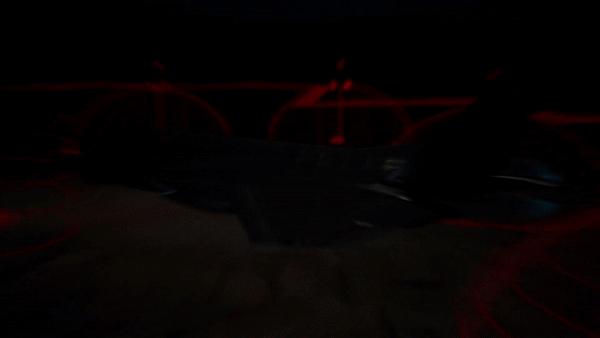
2. It has the most advanced and comprehensive sensor suite of any fighter jet in history.
The Active Electronically Scanned Arrays (AESA) radar, Distributed Aperture System (DAS), Electro Optical Targeting System (EOTS) and Helmet Mounted Display System allow the pilot to see everything in the battlespace with unprecedented situational awareness.
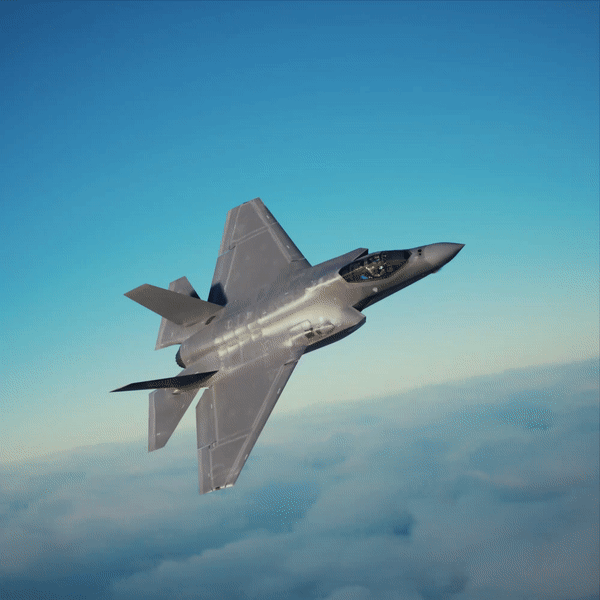
3. It is a force multiplier.
The F-35 can operate as an intelligence, surveillance and
reconnaissance asset and battle manager, sharing information to all
networked ground, sea and air assets in the battlespace. This ensures
men and women in uniform can execute their mission and come home safe.

4. It has range and mission persistence.
The F-35C carries nearly 20,000 lbs of internal fuel and has a range of greater than 1,200 nm. The enables F-35C pilots to fly further and remain in a desired battlespace longer before refueling is necessary.
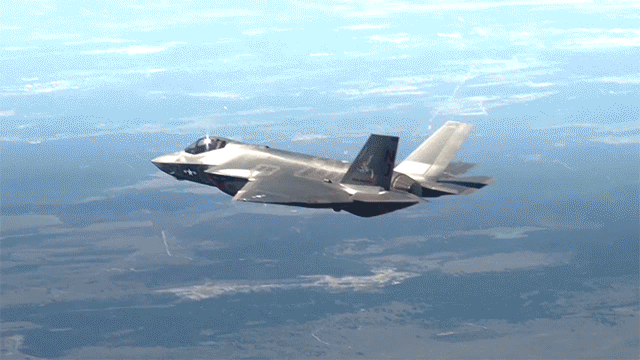
5. It has the largest wingspan and most robust landing gear of all F-35 variants.
The design of the F-35C’s wings and landing gear make it suitable
for catapult launches and fly-in arrestments aboard naval aircraft
carriers.
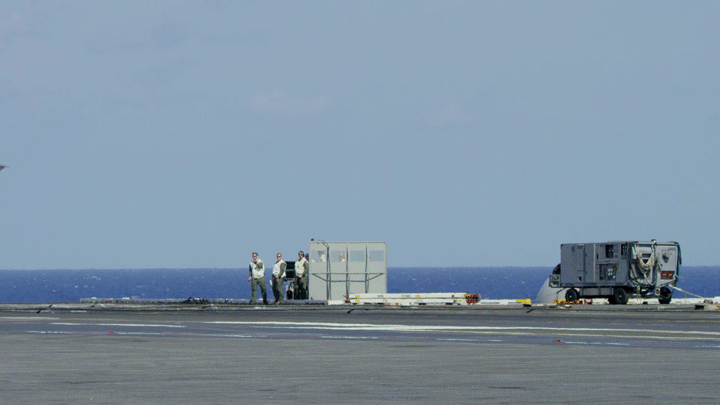
Its wingtips also fold to allow for more room on the carrier’s deck while deployed.
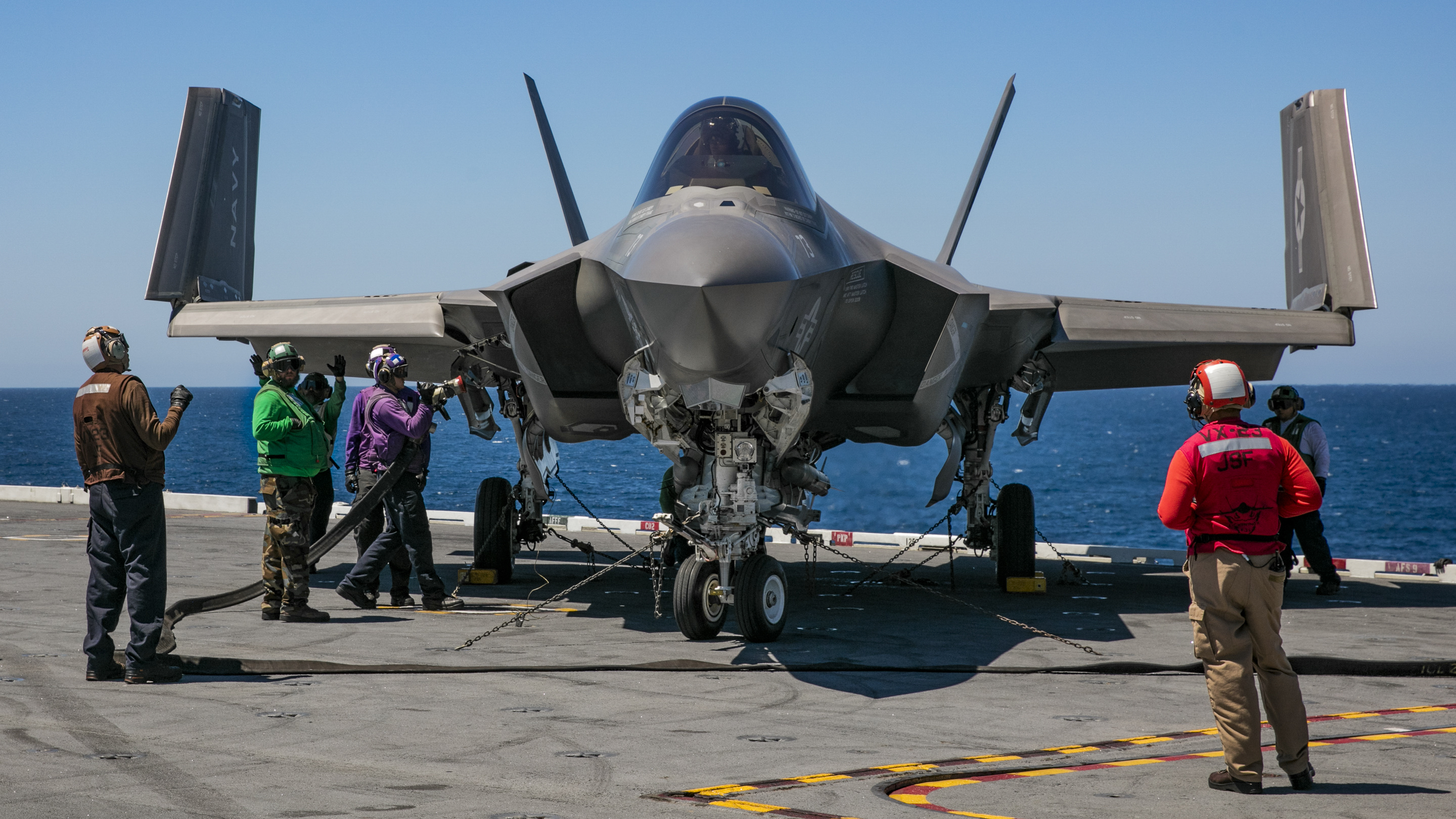
6. It is supersonic.
The F-35C can reach speeds of 1.6 Mach (~1,200 mph) even with a
full internal weapons load. With its fuel and internal weapons load, the
F-35C can fly faster with no drag associated with external tanks and
weapons required for legacy fighters.
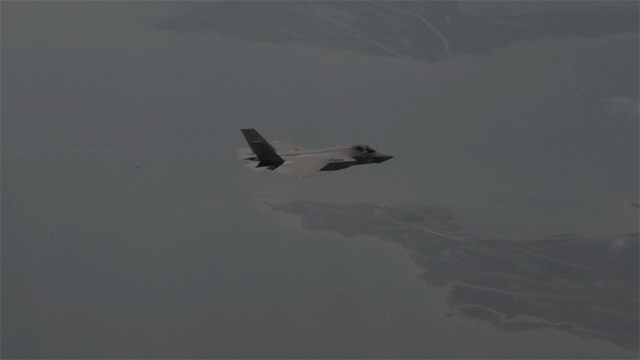
7. It can carry internal and external weapons.
The F-35C can carry more than 5,000 lbs of internal weapons, or more than 18,000 lbs of combined internal and external weapons. This allows the Navy to operate in stealth when necessary, or increase lethality with additional weapons externally when the air space is permissive.
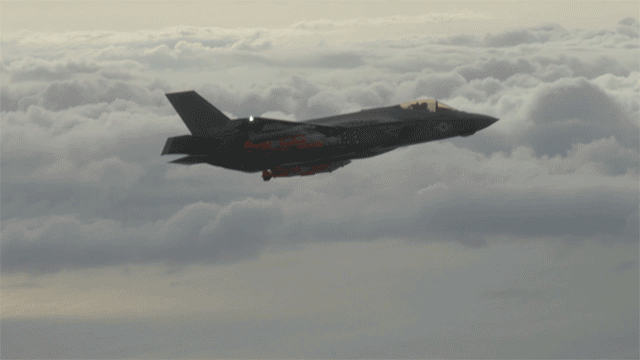
8. The U.S. Navy is the largest F-35C operator and has plans to procure 273 F-35Cs.
Naval Air Station Lemoore is home to the Navy’s Joint Strike Fighter Wing. The U.S. Marine Corps is also acquiring F-35C aircraft along with their F-35BSs.
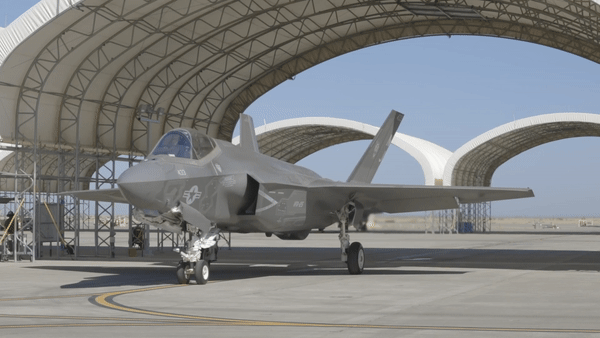
9. The F-35 is built by thousands of men and women in the United States and around the world.
Lockheed Martin leads the F-35 industry team with Northrop Grumman, BAE Systems and Pratt & Whitney. The program is managed by the Department of Defense’s F-35 Joint Program Office. More than 1,900 suppliers build and sustain the F-35 program in 48 U.S. states and in more than 10 countries.

And what Lockheed won't Mention: GAO Flags Serious F-35 Program Delays Into 2025 Amid Hardware & Software Malfunctions
Summary
- F-35 program faces production delays
- Program plagued by tardy engine deliveries
- TR-3 delays cause over 100 parked jets
A new US Government Accountability Office (GAO) report shed some light on the high-profile F-35 Lightning II Joint Strike Fighter program. The F-35 is now in full-rate production (since March 2024), but there are still plenty of delays and wrinkles in the production of the world's most popular 5th-generation fighter jet. As the aircraft are procured and produced over time, they are modernized (the ones being built now are Block 4).
However, delays in the program (specifically the Technology Refresh 3 upgrade) have caused over 100 F-35s to be parked at Lockheed Martin's facilities. These delays are expected to work themselves out in a year or so. However, they come on the back of a seemingly endless string of delays to the F-35 program and have been the cause of much frustration in the Pentagon.
F-35 production hit with delays
The GAO report states that in calendar year 2023, 100% of the aircraft's Pratt & Whitney engines were delivered late, while 91% of the Lockheed Martin aircraft (without engines) were late.
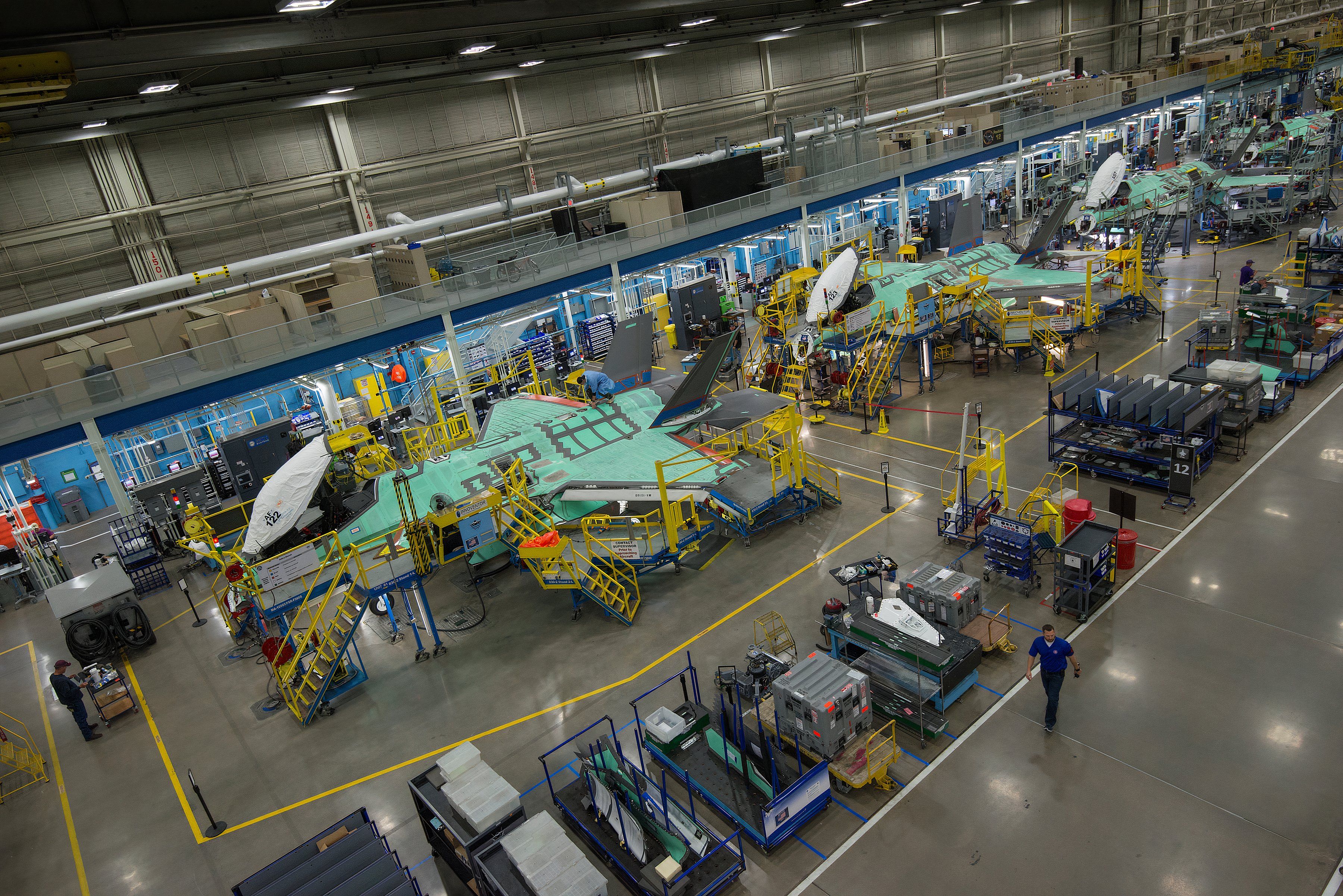
The GAO report highlights some deficiencies in the production of the jets—especially the engines. "...the F-35’s contractors continue to deliver the engines and aircraft late—a trend that worsened in the last few years." The report also notes that some of the problems with late deliveries are manufacturing issues and part shortages. It also noted that "the program and contractors are mitigating these issues."
The report states that hardware and software delays are associated with Technology Refresh 3 (TR-3). TR-3 is a suite of hardware and software upgrades crucial to the Block 4 modernization effort (and costs $1.8 billion). Perhaps it is unsurprising that progressive upgrades and modernization to the aircraft have ripple effects and delays.
"TR-3 delays slow the program’s ability to develop and test Block 4 capabilities. Because the program has prioritized the TR-3 effort, TR-3 is taking up the bulk of the current testing capacity in the software laboratories and flight testing. This means that the program is using fewer test resources to mature Block 4 capability development, which, in turn, creates risk of delaying further Block 4 capability development and testing." - GAO Report
The TR-3 delays are cited as another factor driving delays and hindering the "program's progress in completing the Block 4 modernization." As with other delay issues, the report does acknowledge that these issues are being worked out. Defense One says "Specifically, the TR-3 software has had trouble supporting the F-35’s radar and electronic warfare systems."
In 2023, Bloomberg reported that the government is withholding $7 million in payments on each undelivered TR-3-enabled fighter jet.
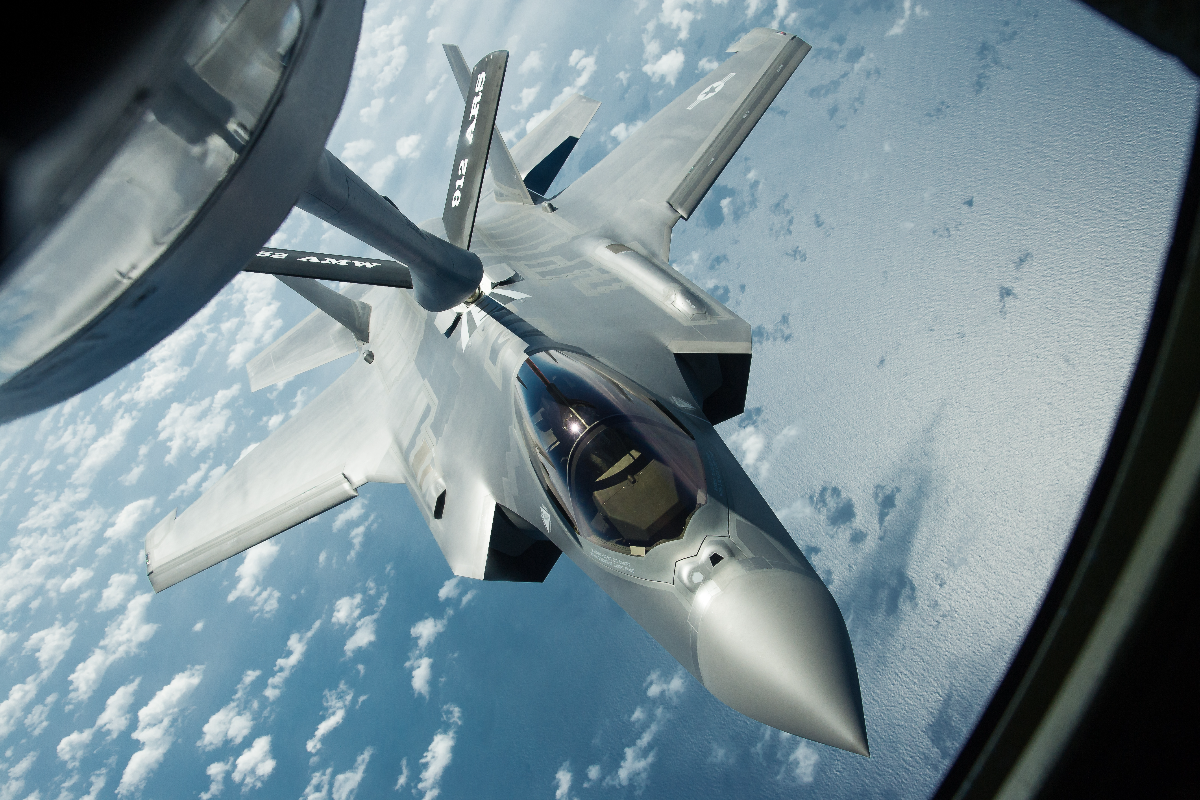
Photo: USAF
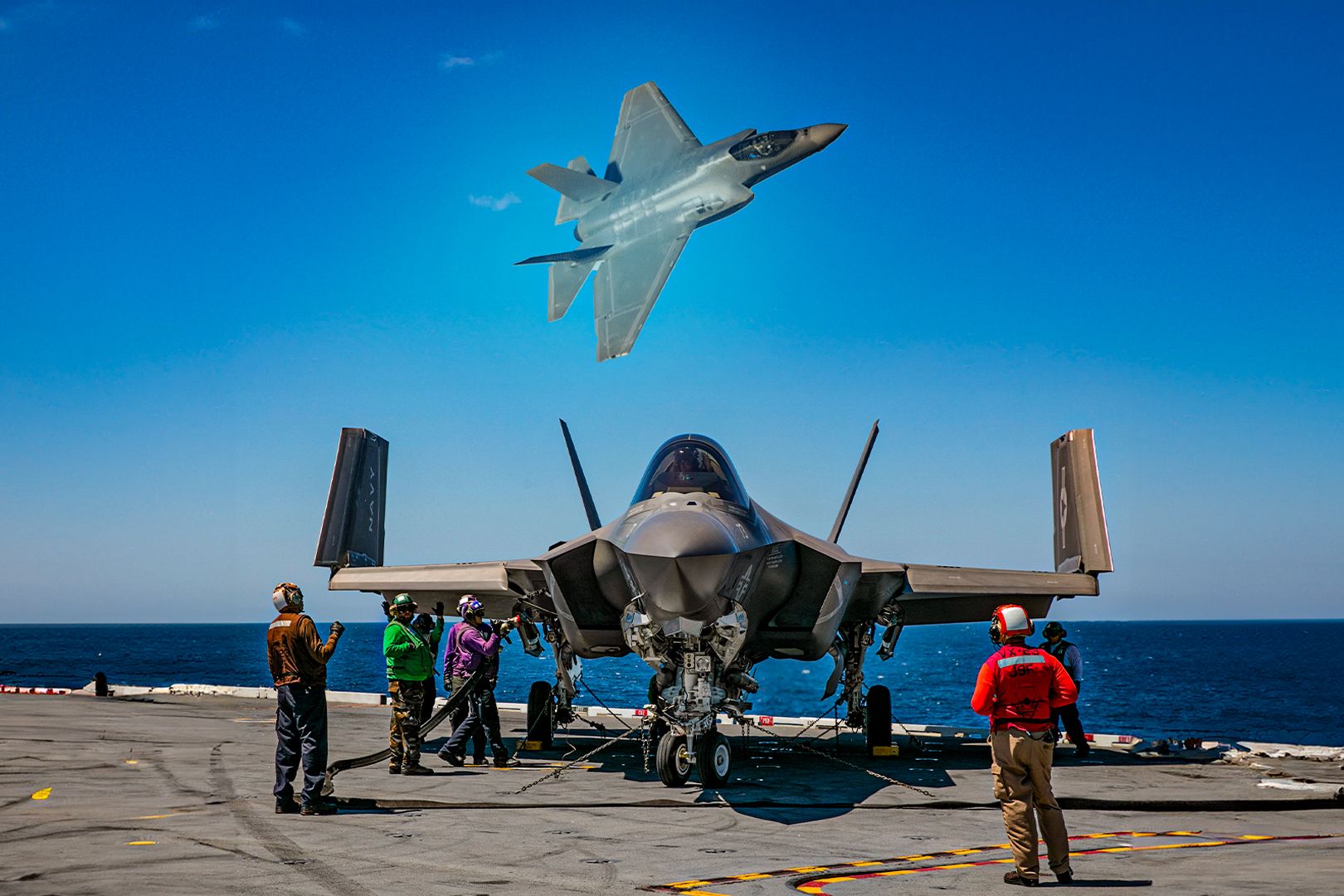
Related
Which Aircraft Carriers Are Certified To Operate The Navy's F-35C Fighters?
Perhaps four carriers have been modified to operate F-35C leaving seven more to be modified or to be retired without modifications.
Running out of space to park F-35s
There are also issues with the aircraft that have been produced. According to Defense One, the Pentagon has refused the delivery of so many F-35s that Lockheed Martin is struggling to find places to park them. The refusal to accept the jets started last July and is due to issues with Technology Refresh-3. These aircraft will not be accepted until the "TR-3 hardware and software are installed and stable."
Defense One quoted Rep. Rob Wittman, R-Va. (the chairman of the House Armed Services Tactical Air and Land Forces subcommittee) saying the number of jets accumulating and sitting around Lockheed's plant is "grossly delinquent." According to him, there are at least over 100 aircraft "stacked up on the tarmac."
The GAO report states that the TR-3 hardware kits and new software will not be available for these aircraft until June 2024 at the earliest. Many of these aircraft are likely to remain parked for months more (once TR-3 is ready, it will take around a year to clear all these jets). For its part, the GAO report did not specify how many aircraft are parked, saying, "DOD deemed reporting the specific quantity of aircraft to be unsuitable for public release." It also noted that Lockheed Martin is expected to exceed its maximum parking.
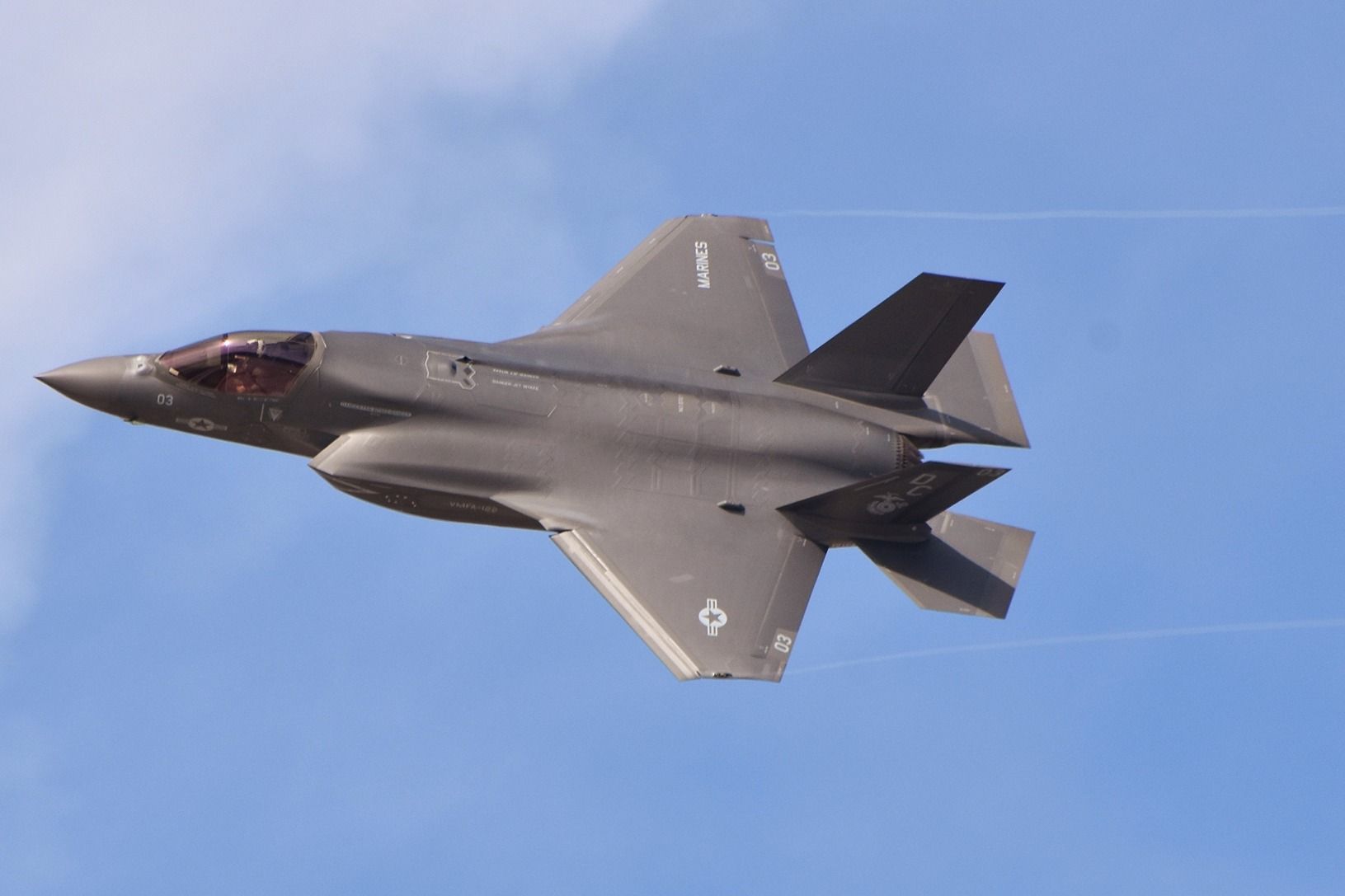
Photo: Michael Fitzsimmons | Shutterstock
Lockheed officials have stated the company has all the infrastructure and capacity to hold the aircraft while they are in limbo. Lockheed stated, "Specific details about parking will not be shared due to security considerations," according to reporting by Defense One.
These parked aircraft include all TR-3-enabled F-35s. The temporarily stored F-35s do not include the F-35s that Turkey had purchased just before it was kicked out of the F-35 program by the United States after it purchased the Russian S-400 air defense system. According to Janes, those jets were "...subsequently subsumed into the US Air Force (USAF)."
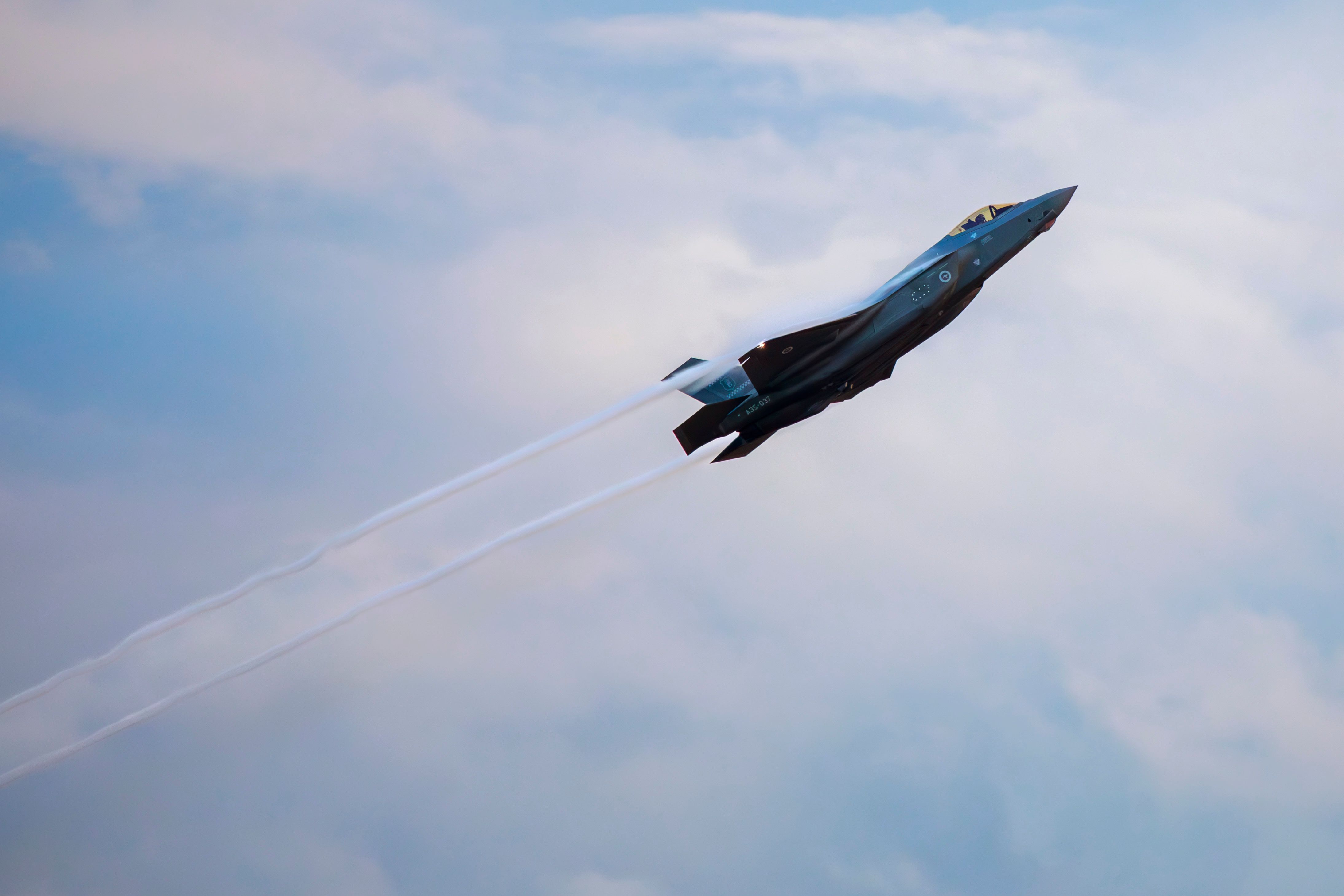
Related
We Asked The Australian Air Force How The F-35 Lightning II Is Performing
U.S.-owned F-35s are notorious for their reliability issues. Yet the Royal Australian Air Force (RAAF) F-35s are performing just fine, thanks.
A $2 trillion program
The GAO report states that the estimated cost of the 2,470 planned F-35 aircraft expected to be purchased by the Army, Navy, and Marines will exceed $2 trillion by 2088. It might be hard to imagine, but the procurement cost of the F-35 has declined as production has ramped up. Air and Space Forces Magazine reported that the cost per tail has improved by 34% between 2014 and 2022.
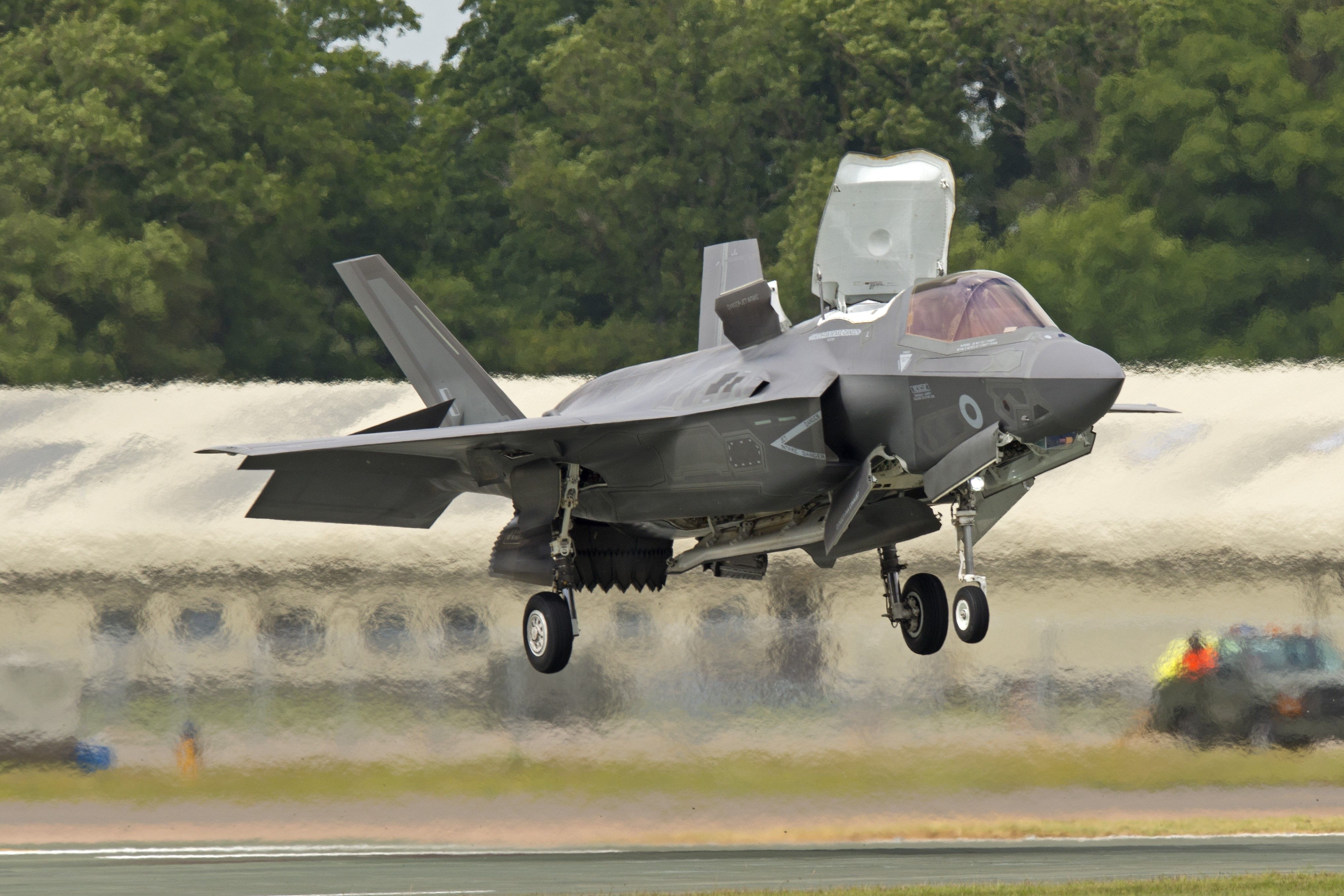
Photo: Peter R Foster IDMA I Shutterstock
So far, almost 1,000 (990) F-35s have been delivered to the US military and exported to air forces around the world. Still, the program is over a decade delayed and has cost $209 billion more than originally planned.
F-35s are now forming the fighter jet backbone of many US-friendly air forces and are the world's most formidable multi-role fighter. Now that Norway, the Netherlands, Denmark, and Belgium have received their F-35s, they have been able to divest their old F-16s and donate some of them to Ukraine.



Comments
Post a Comment